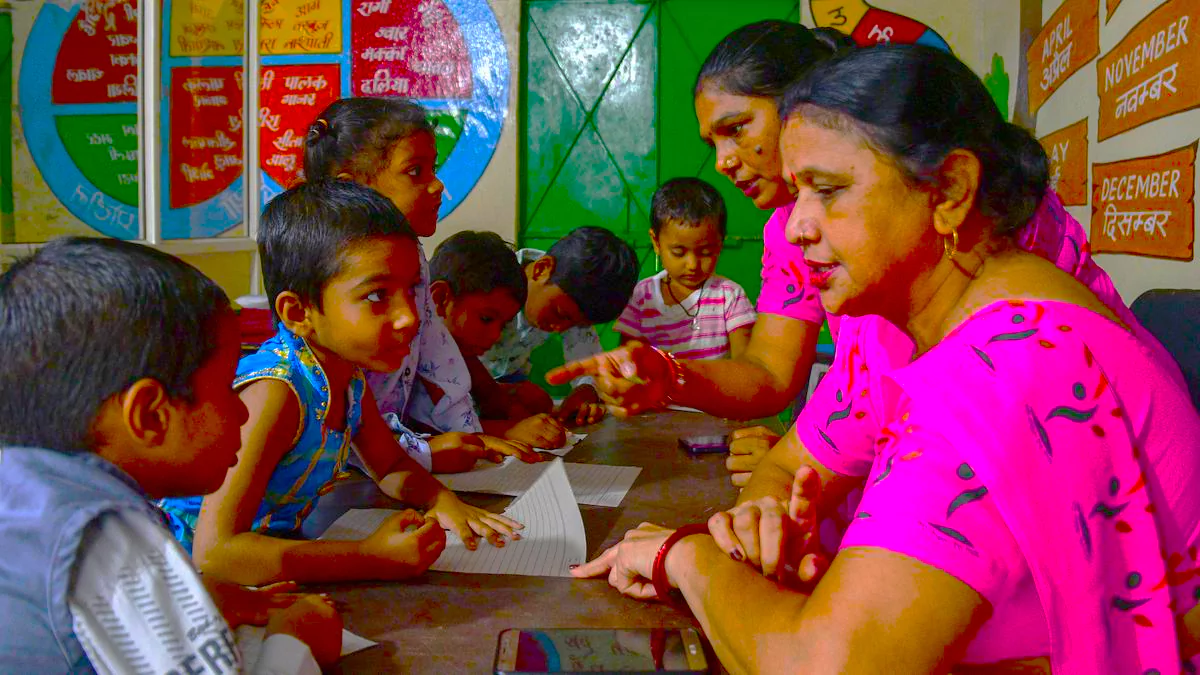Context
The Ministry of Women and Child Development (MWCD) has released the National Curriculum for Early Childhood Care and Education 2024 titled ‘Aadharshila’.
Centre Releases Curriculum Framework for 3 to 6-Year-Olds
- India has 14 lakh anganwadis spread across villages, serving as key centers for health and nutrition support for pregnant mothers and children.
- The Ministry of Women and Child Development (MWCD), in collaboration with the Ministry of Education, aims to transform these anganwadis into preschools.
- They envision anganwadis to provide both health services and basic education to children.
- This shift aims to strengthen children’s foundational literacy and numeracy skills from an early age.
Enroll now for UPSC Online Course
About Aadharshila
- Aadharshila curriculum is released by the Ministry of Women and Child Development (MWCD).
- This curriculum aligns with the National Education Policy 2020 and the National Curriculum Framework.
- Objective: It aims to boost basic reading and math skills for three to six-year-old children in anganwadis.
- It is a detailed 48-week curriculum of learning over three years.
- The framework covers various domains, including cognitive, physical, social, and emotional development.

Curriculum Framework Development By:
- The framework is crafted by an internal committee representing various government departments, educational institutions, and civil society organizations.
Key Components of Aadharshila
-
Weekly Play Calendar: A Structured Approach
- Four Weeks: The curriculum includes a weekly plan for play activities, starting with four weeks focused on academic activities to help children transition from home to the anganwadi center.
- 36 Weeks: The next 36 weeks prioritize exploration and free play, along with conversations, creative activities like storytelling and art, and reflecting on experiences.
- Storytelling themes cover important lessons like conflict resolution, responsibility, and cooperation.
-
Learning Content:
- Children learn about colors, shapes, numbers, senses, body parts, family dynamics, and social interactions.
- They practice listening, following instructions, basic counting, and recognizing sounds.
- Themes also include seasonal changes, festivals, and food.
-
Recap and Reinforcement:
- Revision of previous lesson: The final eight weeks focus on revisiting previous lessons through worksheets and observing children’s progress.
- Tailored age group Activities: Activities and schedules are tailored to different age groups, with detailed instructions, materials lists, and goals to guide teachers.
-
Promoting Development: Building Essential Skills:
- The curriculum aids in developing listening skills, vocabulary, imagination, storytelling, following directions, creativity, and social skills.
- It nurtures self-expression and self-esteem, laying a strong foundation for transitioning to Grade 1.
National Framework for Preschool Education: Empowering States
-
Supporting State Solutions:
- The national framework for children aged three to six will guide states in creating their own suitable curriculums.
- This approach addresses later school challenges by offering tailored solutions.
-
Importance of Structured Guidance:
- Before, states without a curriculum treated preschool as an extension of primary education, mainly focused on reading and writing.
| Benefits of Aadharshila |
Challenges Before Aadharshila |
| Promotes foundational literacy and numeracy |
Requires training of anganwadi workers |
| Strengthens cognitive development |
Requires adapting to mixed age groups (3-6 years old) |
| Enhances psychosocial development |
Lacks specific guidance on addressing developmental delays |
| Provides a play-based learning experience |
Curriculum is relatively new and long-term impact needs to be studied |
| Uses readily available materials |
May not be suitable for all cultural contexts (states to develop their own curriculums based on framework) |
| Identifies potential developmental delays through age-appropriate activities |
The curriculum is not entirely suitable for all cultural contexts within India. |
-
- It provides specific guidance on activities and organization to ensure effective preschool learning.
Enroll now for UPSC Online Classes
-
Integration with Training Programs:
- The ‘Poshan Bhi, Padhai Bhi’ scheme initiated training for anganwadi workers in early childhood education last year.
- Now, this curriculum will be integrated into ongoing training sessions, helping anganwadi workers transition into preschool instructors.
- Currently, 6,758 state-level master trainers from 329 districts across 32 states have undergone training under the ‘Poshan Bhi, Padhai Bhi’ program.
Also Read: Navchetana: The Activity-Based Curriculum
![]() 20 Apr 2024
20 Apr 2024

